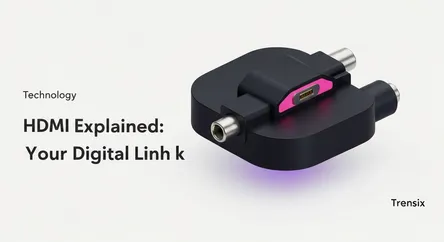Technology
HDMI Explained: Your Digital Link

Discover HDMI (High-Definition Multimedia Interface), the universal standard for connecting high-definition video and audio with a single cable.
What is it?
HDMI stands for High-Definition Multimedia Interface. It is the global standard for connecting high-definition and ultra-high-definition devices. This single-cable solution transmits uncompressed digital data, carrying both video and audio from a source, like a game console, streaming device, or Blu-ray player, to a display, such as a TV or computer monitor. Since its introduction, it has replaced older, bulkier analog cable standards, simplifying home entertainment and professional AV setups by combining multiple signals into one streamlined, easy-to-use connector.
Why is it trending?
While HDMI has been a standard for years, its continuous evolution keeps it relevant. The latest versions, particularly HDMI 2.1, are trending due to the rise of 4K and 8K displays, next-generation gaming consoles, and advanced home theater systems. HDMI 2.1 supports higher resolutions, faster refresh rates (like 120Hz for smooth gaming), and features like eARC (Enhanced Audio Return Channel) for high-fidelity sound. This makes it essential for anyone wanting to get the best performance from modern entertainment gadgets.
How does it affect people?
HDMI has a massive impact on daily life by simplifying technology. It has become the default connection for nearly every consumer electronic device, from laptops and cameras to projectors and soundbars. This universal adoption means people can easily connect different brands and types of devices without worrying about compatibility issues or a mess of different cables. It has made setting up a home theater or connecting a laptop for a presentation a simple plug-and-play experience, ensuring high-quality results for everyone.